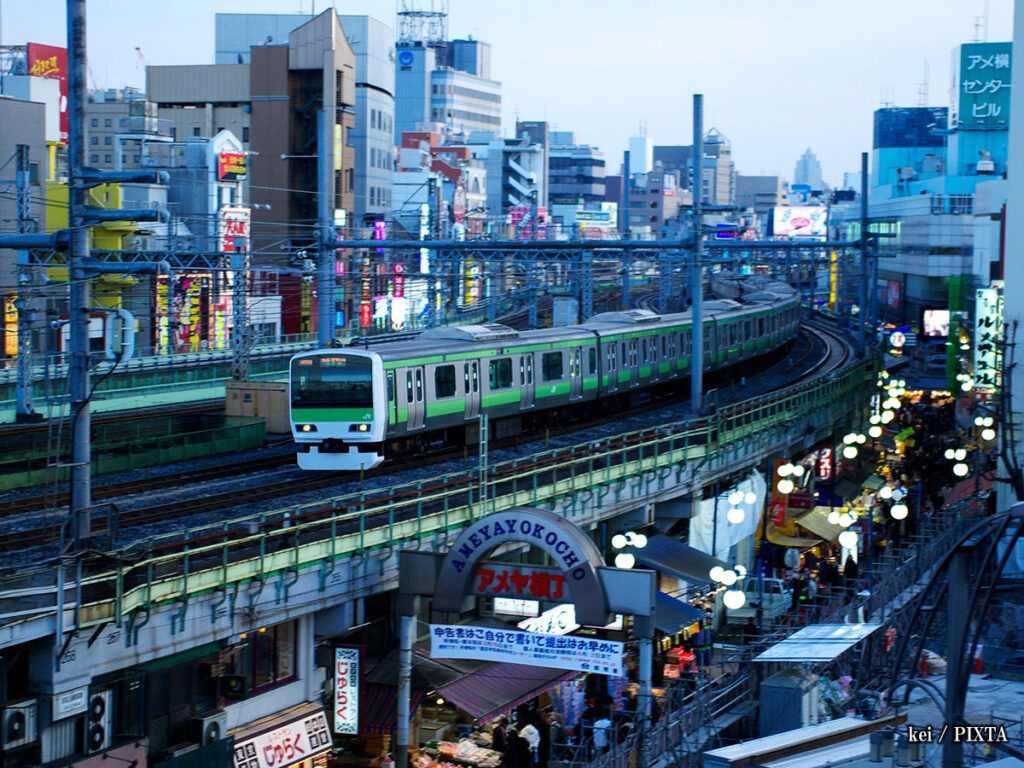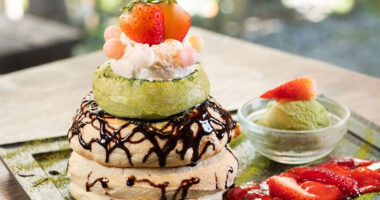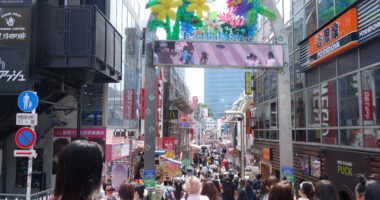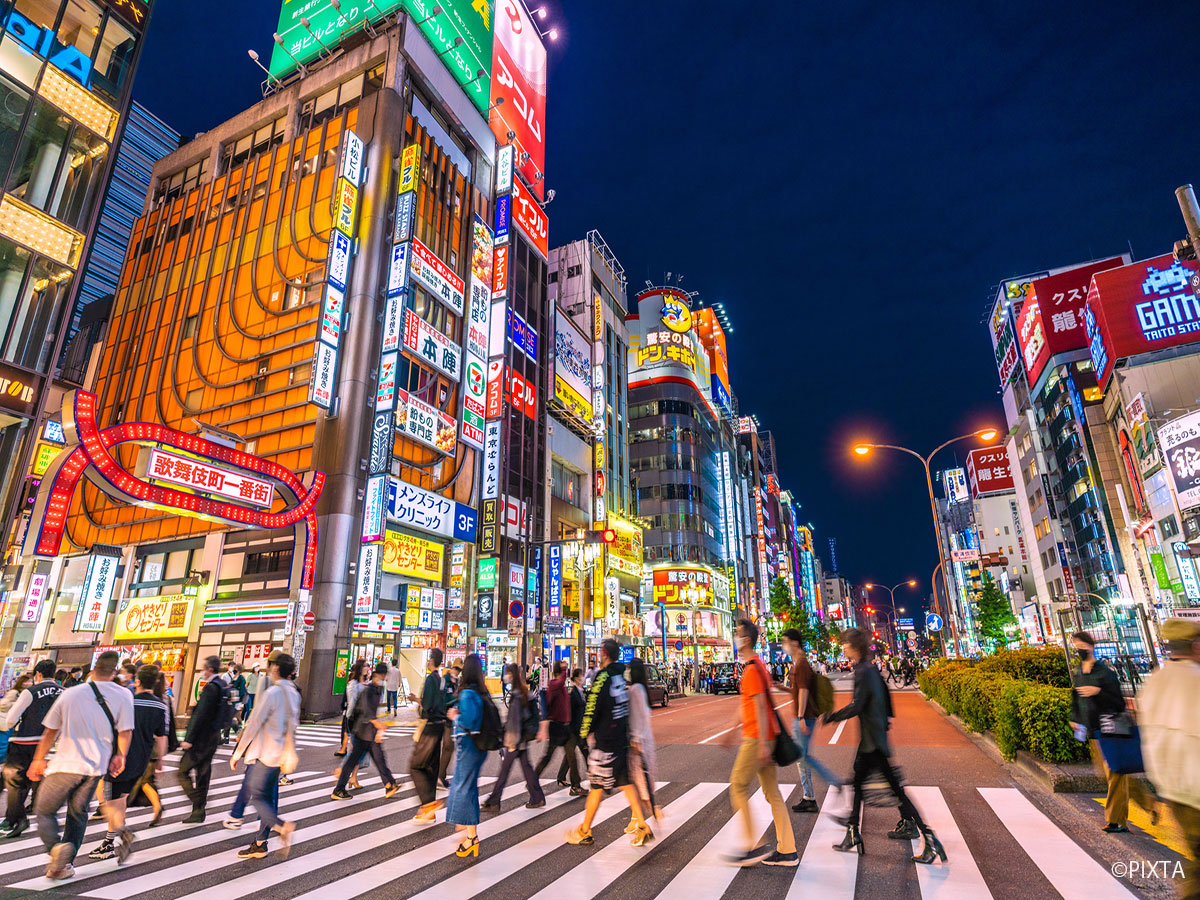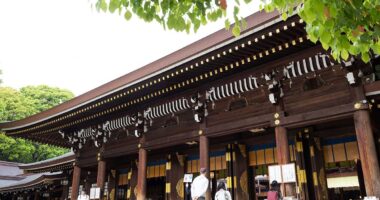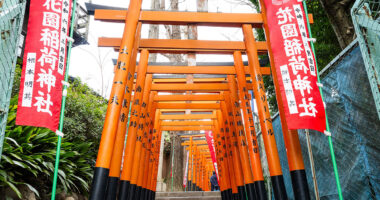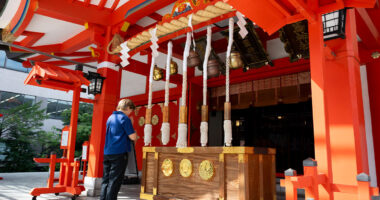- Discover Tokyo’s heartbeat: Why the Yamanote Line is vital to any travel guide
- Why the Yamanote Line is essential for tourists in Tokyo
- Exploring Tokyo with the Yamanote Line: How to use it for sightseeing
- Top Five Stations on the Yamanote Line
- Sightseeing without the splurge
- How to travel the Yamanote Line with kids: family-friendly tips
- Wrap up
Imagine exploring Tokyo as if stepping into scenes from your favorite anime—vibrant, dynamic, and endlessly intriguing. Each station on the Yamanote Line unfolds like a new episode, offering unique adventures, distinctive characters, and delightful surprises. As Tokyo’s busiest train line, the Yamanote Line pulses through the city, connecting iconic districts as seamlessly as story arcs intertwine in a captivating anime series. Whether you’re an anime enthusiast, a curious first-time visitor, or simply someone eager to dive deeper into Tokyo’s charm, the Yamanote Line invites you to experience the essence of Tokyo, one stop at a time.
In this article, we’ll guide you to the top five must-visit stations on the Yamanote Line, each offering its own slice of Tokyo magic, ready to be explored. So, buckle up, and let’s embark on a Tokyo adventure you won’t forget!
Discover Tokyo’s heartbeat: Why the Yamanote Line is vital to any travel guide
The Yamanote Line, a circular train route running through central Tokyo, is often referred to as the city’s lifeline. Serving as a major transport hub, it links many of Tokyo’s most exciting districts and attractions. Whether you’re a first-time tourist or a seasoned traveler, the Yamanote Line offers a convenient, efficient, and affordable way to explore Tokyo.
Why the Yamanote Line is essential for tourists in Tokyo
If you’re visiting Tokyo, chances are you’ll find yourself using the Yamanote Line. This 34.5-kilometer (about 21 miles) loop train system has 30 stations, making it one of the most efficient and easy-to-use transport networks in the city. The line operates at frequent intervals, typically every three to five minutes, and connects major tourist areas like Shibuya, Shinjuku, Harajuku, and Ikebukuro.
The Yamanote Line is crucial for tourists for several reasons:
- Convenience:
It connects almost all major attractions in Tokyo. From bustling shopping districts to serene parks, there is something for everyone. - Affordability:
The fares are reasonable and can be easily paid via transport cards like Suica or PASMO, which can be used on buses, trains, and vending machines across the city. - Simplicity:
The line runs in a loop, making it easy to understand. You don’t need to worry about confusing transfers—just hop on and off at the stations that interest you. - Time-Saving:
The trains are punctual and quick, so you can easily fit more attractions into your day.
Exploring Tokyo with the Yamanote Line: How to use it for sightseeing
When it comes to sightseeing in Tokyo, the Yamanote Line is your best friend. The stations along the route are like doorways to the city’s most famous landmarks, vibrant shopping streets, and rich cultural experiences. Here’s how you can make the most of the Yamanote Line for your sightseeing adventure.
- Plan your stops:
Choose stations based on your interests. For example, if you’re into shopping, Shibuya and Harajuku are must-visit stations. If you prefer history and culture, get off at Ueno or Akihabara. - Use Google Maps or HyperDia:
These apps are fantastic for navigating the Tokyo transport system, especially when figuring out connections and travel times. - Buy a JR Pass or Day Ticket:
For tourists, the JR East Rail Pass or a Yamanote Line day pass can save you money if you plan to do a lot of sightseeing. - Take advantage of the views:
Some Yamanote Line stations, such as Shibuya and Harajuku, offer great views of Tokyo’s skyline. Don’t forget to look out the window as you travel!
The Yamanote Line is ideal for those who want to cover a lot of ground in a short amount of time. Let’s jump in and explore the top 5 stations on the Yamanote Line that should be at the top of your list.
Top Five Stations on the Yamanote Line
Shibuya Station: the heart of Tokyo’s youth culture
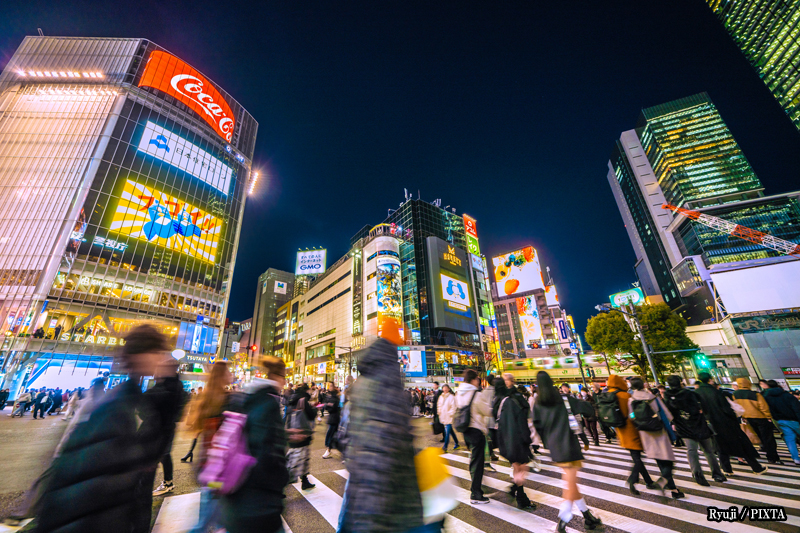
Photo for illustrative purposes
Shibuya is one of the most famous and energetic areas in Tokyo, known for its massive Scramble Crossing, iconic fashion scene, and vibrant nightlife. It’s the place to be for those looking to experience Tokyo’s modern and youthful side.
What to do
- Take in the famous Shibuya Crossing, the busiest pedestrian intersection in the world.
- Explore Center-Gai for trendy shops, cafes, and restaurants.
- Visit the Hachikō Statue near the station, dedicated to the famous loyal Akita dog.
Nearby attractions
- Shibuya 109
A shopping complex offering the latest trends in fashion. - Nabeshima Shoto Park
A hidden gem with a small pond, walking paths, and a tranquil atmosphere, perfect for a quiet escape from the city’s buzz.
Shibuya offers an endless list of activities for all ages. Whether you like window shopping or enjoying a night out, Shibuya has something for everyone.
Shinjuku Station: Tokyo’s entertainment capital
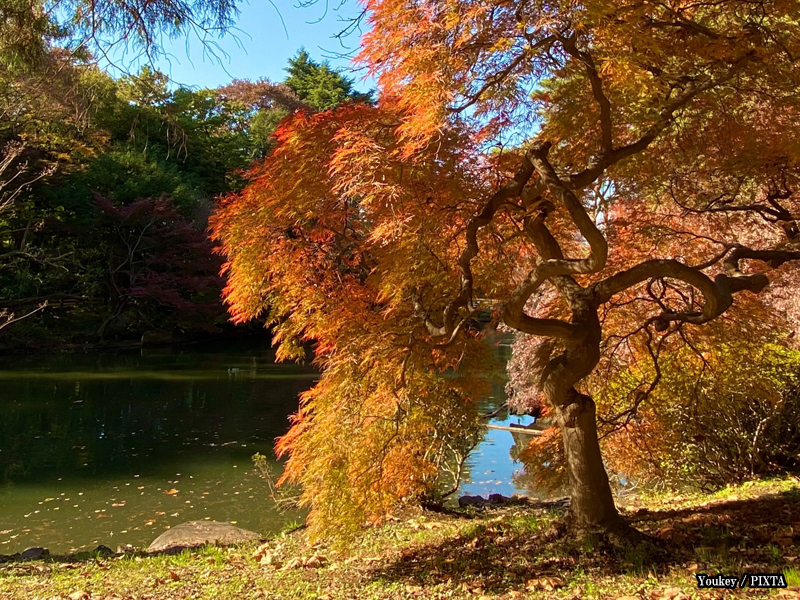
Photo for illustrative purposes
Shinjuku is known for being the heart of Tokyo’s entertainment and business districts. The station itself is the world’s busiest railway station, handling over 3.5 million passengers every day. It’s packed with shopping malls, restaurants, bars, and entertainment.
What to do
- Visit the Tokyo Metropolitan Government Building for free observation decks with panoramic views of the city.
- Explore the Kabukicho district for its neon lights and lively nightlife.
- Discover the tranquil Shinjuku Gyoen National Garden, a beautiful blend of Japanese, English, and French gardens.
Nearby attractions
- Golden Gai
A maze of tiny bars, each with its own unique theme. - Samurai Restaurant
A dazzling and quirky dinner show featuring samurai, mythical creatures, colorful floats, and dancing. - Omoide Yokocho
A narrow alley filled with small eateries serving traditional yakitori and local dishes.
Shinjuku offers a mix of fast-paced urban life and peaceful oases. It’s the perfect place to experience both the lively and serene sides of Tokyo.
Harajuku Station: Tokyo’s fashion and culture hub
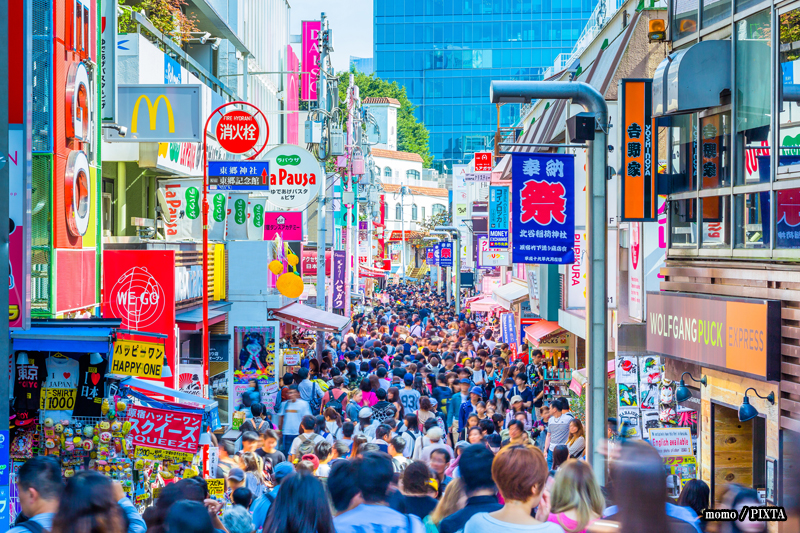
Photo for illustrative purposes
Known for its vibrant street fashion and cool cafes, Harajuku has become synonymous with Tokyo’s fashion-forward culture. It’s a favorite among young locals and tourists alike, offering a unique shopping experience.
What to do
- Wander through Takeshita Street, famous for its eclectic mix of fashion shops, cafes, and crepes.
- Visit the Ōta Memorial Museum of Art, which displays traditional Japanese Ukiyo-e art.
- Walk through Meiji Shrine, one of Tokyo’s most significant Shinto shrines, located nearby in the lush forested area.
Nearby attractions
- Omotesando
A tree-lined avenue full of upscale boutiques and cafes. - Yoyogi Park
A spacious park ideal for a relaxing stroll or picnic.
Harajuku is a blend of fashion, culture, and history, making it an ideal spot for tourists looking to explore Tokyo’s contemporary vibe.
Ueno Station: a blend of nature, history, and culture
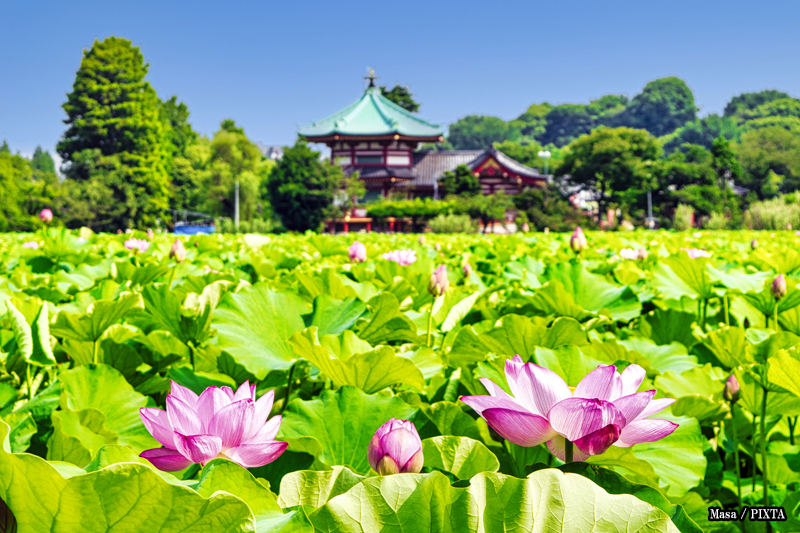
Photo for illustrative purposes
Ueno is known for its historical significance, beautiful parks, and cultural attractions. It’s an excellent station to visit for those interested in Tokyo’s more traditional and serene side.
What to do
- Explore Ueno Park, home to museums, temples, and seasonal cherry blossoms in the spring.
- Visit the Ueno Zoo, home to giant pandas and various other animals. Hours are 9:30 AM to 5:00 PM from Tuesday to Sunday.
- Discover Ameyoko Market, a bustling street market offering everything from fresh seafood to clothing.
Nearby attractions
- Tokyo National Museum
Japan’s oldest and largest museum, showcasing traditional art and artifacts. Hours are from 9:30 AM to 5:00 PM from Tuesday to Thursday, and 9:30 AM to 8:00 PM on Friday and Saturday; it remains closed on Monday. - Shitamachi Tanabata Museum
Learn about the history of Tokyo’s old town and experience exhibitions related to seasonal annual events. It operates from 9:30 AM to 4:30 PM with an entry of 300 JPY for adults and 100 JPY for ages up to high school (tax included). It’s closed on Mondays and days after national holidays.
Ueno is a cultural gem, perfect for those who want to experience Tokyo’s historical and natural beauty.
Akihabara: Tokyo’s electric town
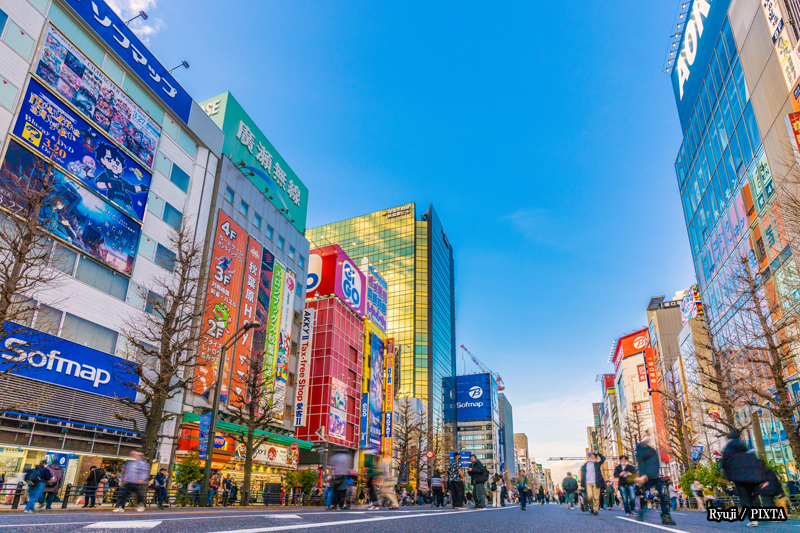
Photo for illustrative purposes
Akihabara is the go-to destination for tech lovers, anime fans, and gaming enthusiasts. Known for its sprawling electronics stores, themed cafes, and vibrant otaku culture, this district is a paradise for anyone interested in Japan’s pop culture scene.
What to do:
- Browse multi-level electronics stores, like Yodobashi Camera for the latest gadgets.
- Explore Akihabara Radio Kaikan, a must-visit spot for anime figures, trading cards, and collectibles.
- Visit a maid café for a uniquely Japanese dining experience where staff dress in costumes inspired by maids.
Nearby attractions
- Kanda Myōjin Shrine
A historic Shinto shrine blending tradition with modernity, popular among anime and tech fans. - mAAch ecute Kanda Manseibashi
A stylish shopping and dining complex built inside a renovated railway bridge, offering a mix of old and new Tokyo.
Akihabara is a dynamic blend of cutting-edge technology and otaku culture. Whether you’re hunting for rare anime merchandise or diving into the world of Japanese gaming, Akihabara has something for every fan.
Sightseeing without the splurge
Beyond the must-visit spots mentioned, these stations along the Yamanote Line open the door to even more free and budget-friendly sightseeing experiences. For example, Shibuya Station offers iconic spots at no cost. Watch the famous Scramble Crossing from an elevated viewpoint at Magnet by Shibuya 109 or visit the nearby Miyashita Park, a commercial center with shops and restaurants, as well as a rooftop space with greenery, sports areas, and a relaxing atmosphere—all open to the public.
Another great option at Shinjuku Station is the Bunkyo Civic Center. This lesser-known observation spot provides stunning, free panoramic views of Tokyo, including a clear sight of Mount Fuji on a clear day, making it a fantastic alternative to expensive viewpoints. With business hours from 7:30 AM to 10:00 PM, Bunkyo Civic Center is a comprehensive facility for residents and visitors alike. It includes Main and Sub-public halls, a Panorama Lounge, and Café, etc. for every age group.
Even in Harajuku, a hotspot for fashion and youth culture, you can take in the creative energy at Design Festa Gallery, where artists showcase unique and ever-changing exhibitions with free entry. The business hours of this gallery are from 11 a.m. to 8 p.m. Just a short walk away, Meiji Jingu Gaien offers a scenic stroll lined with beautiful ginkgo trees that turn golden in autumn, making it a picture-perfect and cost-free experience.
Ikebukuro, another fantastic destination along the Yamanote Line, offers affordable sightseeing opportunities. Instead of expensive attractions, take a stroll through Naka-Ikebukuro Park, a gathering space that hosts events, live performances, and art installations. The Tokyo Metropolitan Theater nearby also offers occasional free exhibitions. Though it is closed for construction until July 2025, it operates daily from 9:00 AM to 10:00 PM. Pokémon fans can explore the Pokémon Center Mega Tokyo. You can also take a relaxing walk around Ikebukuro Nishiguchi Park, a popular spot for people-watching and unwinding, without opening your wallet.
Lastly, Ueno Station gives you access to Shinobazu Pond, a serene spot within Ueno Park where you can enjoy scenic walks, admire seasonal lotus blooms, and watch local wildlife—all for free. This place also gives you access to Bentendo Temple, a picturesque shrine where you can soak in the peaceful atmosphere and traditional architecture at no cost.
In conclusion, the Yamanote Line is not only a convenient and efficient way to travel across Tokyo, but it also allows you to enjoy a variety of affordable sightseeing experiences. Whether you’re visiting parks, bustling shopping districts, or historic landmarks, the Yamanote Line ensures you can make the most of Tokyo without straining your budget.
How to travel the Yamanote Line with kids: family-friendly tips
Traveling with children can be a challenge, but the Yamanote Line is one of the most family-friendly transport options in Tokyo. Here are some tips to make your journey more comfortable.
- Use stroller-friendly stations
Many Yamanote Line stations are equipped with elevators and wide gates for easy access with strollers. - Avoid rush hours
The trains can get very crowded during rush hours (7:30 – 9:00 AM and 5:00 – 7:00 PM). Try to plan your trips during quieter times, like mid-morning or early afternoon. - Keep hydration and entertainment handy
Bring water to keep little ones hydrated and small toys or games to keep them entertained during the ride, but be mindful of things that make noise. - Look for family-friendly stations
Stations like Shibuya, Shinjuku, and Ikebukuro offer child-friendly facilities and attractions.
Wrap up
The Yamanote Line offers an unbeatable way to explore Tokyo. With its extensive coverage, affordability, and ease of use, it’s the perfect transport option for tourists. The top five stations highlighted in this article—Shibuya, Shinjuku, Harajuku, Ueno and Akihabara—are some of the most exciting and diverse places to visit in Tokyo. However, Tokyo has even more to explore beyond these locations. Every stop along the Yamanote Line has something unique to offer—so be sure to venture beyond and discover your own favorite spots!
Whether you’re looking for shopping, history, nature, or entertainment, the Yamanote Line has you covered. So, hop on, explore, and let the Yamanote Line lead the way! Check out Umami bites for more travel tips, hidden gems, and local insights to maximize your Tokyo experience. Your adventure awaits!
